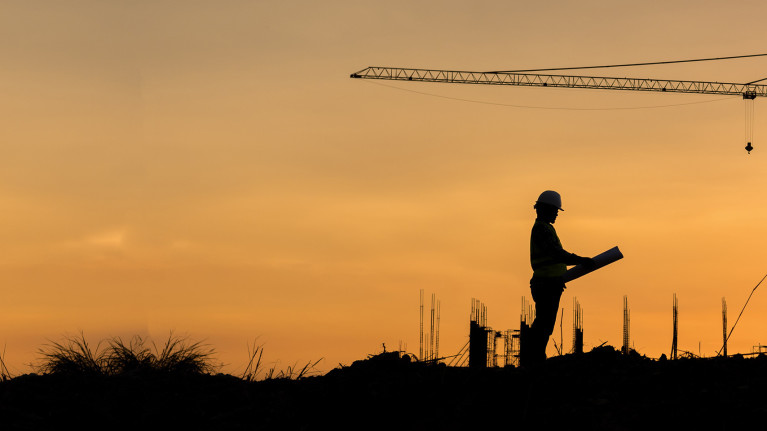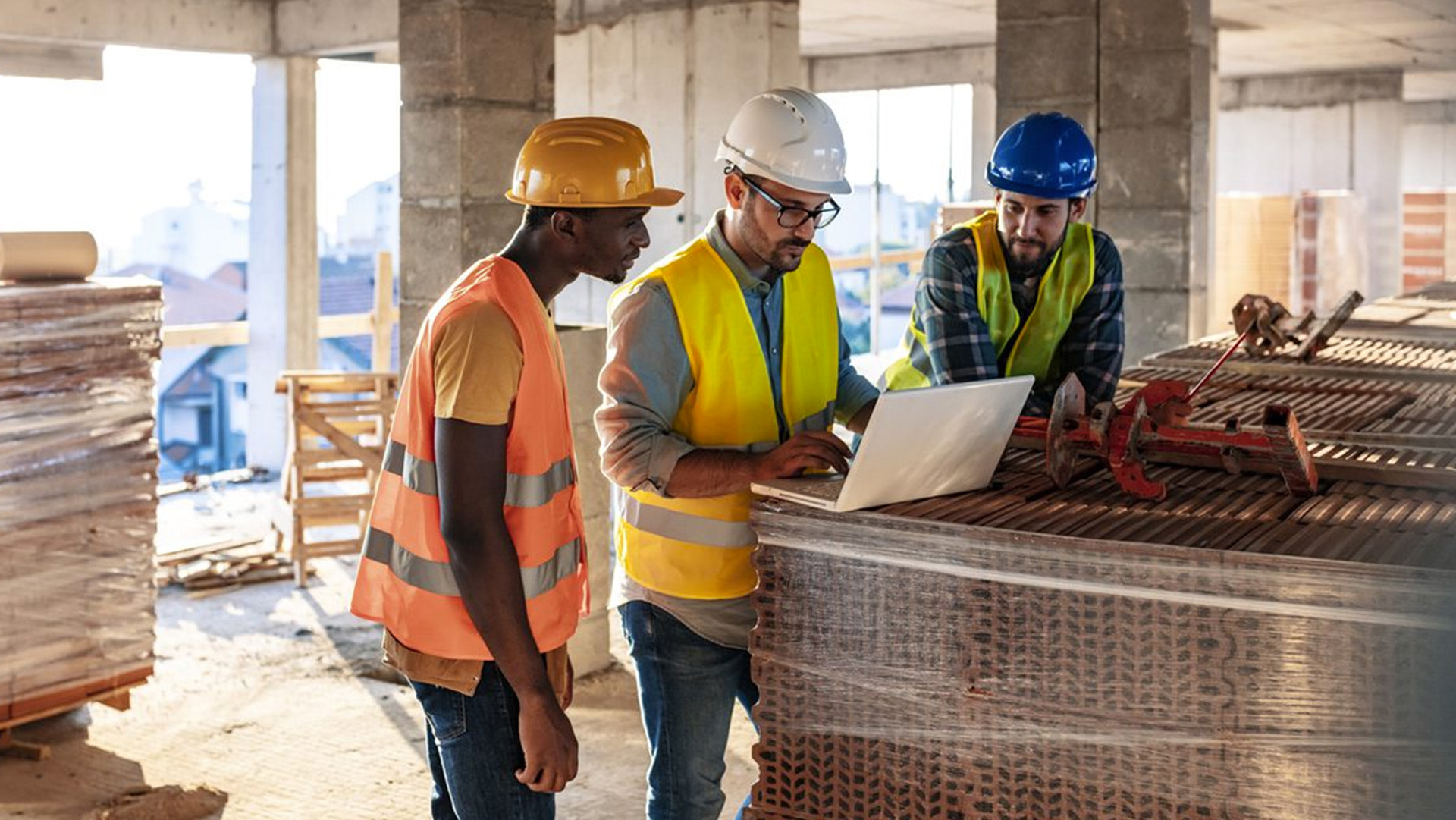
Article
5 Tips for Subcontractors to Improve Construction Collaboration and Performance
Effective construction collaboration is necessary for streamlined project completion, whether you run a small business or a large enterprise.
Want to learn more? We’re here to help
The future of construction collaboration looks bright for subcontractors, with collaboration software technology becoming increasingly available and streamlined, providing even greater levels of insight, control, and communication.
Construction collaboration software helps construction companies manage projects more effectively and efficiently. It provides features such as improved communication, better visibility into progress, and easier access to data from anywhere in the world. Read on to discover the best collaboration strategies and tools.
Chapter 1
The (Crucial) Role of Subcontractors in Construction
In the dynamic and complex construction world, collaboration is not just a buzzword; it's a necessity. Construction projects involve numerous stakeholders, from architects and engineers to contractors, subcontractors, and clients. Each has a unique role, and seamless collaboration is crucial for a project's success.
Benefits of Effective Construction Collaboration
Collaboration plays a vital role in the construction industry, offering numerous benefits that contribute to the overall efficiency and success of projects.
Better collaboration leads to improved work quality, effective communication among stakeholders, and various benefits such as innovation, time and cost-saving, and improved client relationships. It enhances resource management by minimising unnecessary labour, money, and time.
Fostering a collaborative environment should be a top priority for construction companies in Australia to achieve success and stronger relationships within the team and with clients.
Challenges in Construction Collaborations
While collaboration offers numerous benefits, it's challenging, especially in the construction industry.
One of the major challenges is communication breakdowns, which can lead to misunderstandings and misinterpretations, causing delays and errors in the project. Project management software in construction can help mitigate these challenges by enhancing communication and coordination among project participants.
Additionally, the industry often grapples with its aversion to new technology. Despite the availability of tools that could enhance collaboration, some companies are reluctant to adopt them due to perceived complexities and training requirements.
Here are the top 5 tips to improve construction collaboration.

Chapter 2
Tip 1. Identify Key Construction Collaboration Stakeholders
Every construction project has several key stakeholders whose collaboration is crucial for success. A project has four main stakeholders (categories): customers, users, suppliers, and investors.
Understanding these stakeholders' roles can help facilitate better communication and collaboration, ultimately leading you to successful completion.
Understanding Stakeholders in Construction Collaboration
A fundamental principle that lays the groundwork for successful project execution is the comprehensive understanding of all stakeholders.
While primary stakeholders such as clients, architects, and contractors often take centre stage, including subcontractors within this web of collaboration is equally pivotal. With their specialised expertise and niche contributions, subcontractors form a critical segment of the construction ecosystem, influencing project timelines, cost management, and overall quality.
Contractors and Subcontractors
Contractors and subcontractors form the backbone of any construction project. They are responsible for executing the actual work outlined in the project plan.
Effective collaboration between contractors and subcontractors is critical as they need to coordinate their efforts to ensure tasks are completed on time and to the required standards. Fostering a good relationship between contractors and subcontractors should be a priority.
Clear communication between all parties can prevent misunderstandings that could lead to costly mistakes or delays.
Collaboration Among All Stakeholders
Collaboration in construction involves a wide array of stakeholders beyond the contractors working together towards a common goal. This includes architects, designers, engineers, contractors, subcontractors, and clients. Each party plays a crucial role, and their collaboration is vital to the successful completion of the project.
Collaboration here means more than just completing tasks on schedule; it's about building solid relationships, nurturing respect and trust, and ensuring everyone has access to the main goals and plans at any time. When all stakeholders are aligned and working synergistically, it leads to better project performance and reduces risks.
Chapter 3
Tip 2. Strategies for Effective Communication
Effective communication is fundamental to any successful project. Without clear and timely communication, misunderstandings can arise quickly, leading to severe problems that may significantly affect the project's completion.
Establish Clear Communication Channels
In a complex field like construction, establishing clear communication channels is paramount. Identify who should communicate with whom, about what, and how often to optimise your communication channels.
Regular meetings, progress reports, and digital communication apps can all form part of your communication strategy. Workforce Planning is another integral tool that enhances communication by providing a clear overview of task assignments, ensuring everyone is informed of their roles, and reducing misunderstandings.
Remember, the goal isn't just to communicate but to ensure that the communication is effective and leads to better collaboration and project outcomes.
Ensure Transparency and Openness
Transparency and openness are critical for effective communication in construction projects. This fosters a culture of trust and encourages problem-solving and innovation.
Transparency about project goals, progress, and challenges keeps everyone on the same page and helps prevent misunderstandings. All team members should feel comfortable sharing their ideas, raising concerns, and asking questions.
Want to keep things transparent? Use collaborative platforms to share the latest updates and info in real time. And remember to encourage some good old-fashioned open discussion during team meetings. It makes everyone feel like their input matters.
Chapter 4
Tip 3. Encourage a Culture of Collaboration
A culture of collaboration can significantly enhance the performance and outcome of your project. When the culture is aligned, the team is aligned. BIM software for construction management enhances collaboration, providing a unified platform for real-time project progression. Developing team skills is crucial to foster this collaborative culture.
Develop Collaborative Skills and Training
Developing the necessary skills within your team is essential to foster a culture of collaboration. This includes communication skills, conflict resolution, problem-solving, and teamwork.
Offering training programs focusing on these skills can help your team members understand the importance of collaboration and equip them with the tools to collaborate effectively.
Establish a Shared Vision and Values
A shared vision and common values are the glue that holds a collaborative team together. When everyone in the team understands the project's goals and shares the same values, it fosters a sense of unity and encourages collaboration.
This helps ensure that everyone is working towards the same objectives and promotes a culture of collaboration.
It's essential to communicate the project's vision and values at the start and remind the team of these throughout the project.
Recognise and Reward Collaborative Behaviour
When team members see their collaborative efforts are appreciated, they are likelier to continue such behaviour.
This could be as simple as acknowledging a team member's contribution during a meeting or offering incentives for successful collaborative efforts. Recognising and rewarding collaboration motivates individuals and sets a positive example for the entire team.
Chapter 5
Tip 4. Measuring and Monitoring Collaboration Performance
Effective collaboration is about implementing strategies and measuring and monitoring their success. Field productivity plays a significant role in this measurement—it directly impacts the outcome and success of your collaborations.
Key Performance Indicators (KPIs) for Collaboration
Key Performance Indicators (KPIs) are valuable tools for measuring team collaboration effectiveness. These can include metrics like the number of successful projects completed, the time taken to complete tasks, or the level of employee satisfaction.
KPIs provide quantifiable evidence of how well your team is collaborating and can help identify areas for improvement.
You can tailor Key Performance Indicators (KPIs) to fit the unique needs of your construction project, and tracking these indicators provides regular insights into the efficiency and effectiveness of your collaborative efforts.
Regular Project Reviews and Assessments
Reviews help identify any issues or bottlenecks that may be hindering effective collaboration. Use feedback from these assessments to make necessary adjustments and improvements.
It's essential to include all team members in these reviews to understand the project's progress and the effectiveness of the collaboration.
Continuous Improvement in Collaboration Practices
In the ever-evolving field of construction, continuous improvement is key to staying competitive and delivering successful projects.
This applies to collaboration practices as well.
Regularly reviewing your collaboration performance and making necessary adjustments can ensure that your collaboration strategies remain practical and relevant.
Remember, the goal is not to achieve perfect collaboration but to continually improve and adapt your collaboration practices to meet the changing demands of your projects and teams.
Chapter 6
Tip 5. Leveraging Technology to Enhance Collaboration
In the digital age, technology is vital in enhancing collaboration. You can leverage various technological tools and platforms to facilitate better communication, coordination, and collaboration in your construction projects. Construction project management collaboration software is excellent for improving project management and team coordination.
Collaborative Project Management Tools
Collaborative project management tools and software are a game-changer in enhancing collaboration in construction projects. These tools offer features that can significantly improve team members' coordination.
Procore, for example, is a construction management platform that can manage every aspect of your project from a bird's-eye view.
These tools create a centralised, all-in-one platform, allowing everyone to store and access all project information. This approach keeps everyone up-to-date and enables more efficient decision-making.
These tools can streamline workflows, lead to more successful project outcomes, reduce miscommunication, and improve collaboration.

Chapter 7
Key Takeaways: The Importance of Effective Construction Collaboration
In conclusion, the significance of effective collaboration in construction is paramount. Collaborative practices yield lasting benefits, fostering transparent communication, shared responsibility, and a positive workplace culture. Beyond individual projects, widespread collaboration drives industry-wide improvements through standardised processes and innovative solutions.
As the construction sector evolves, collaboration remains a cornerstone. Platform technologies, like Procore, offer enhanced efficiencies and seamlessness. The future entails utilising technology to integrate people, processes, and data for holistic project management. Investing in collaborative tools will be essential for competitiveness and quality project delivery.
Embrace the future of collaboration with Procore to stay ahead in the evolving construction landscape. Don't get left behind; embrace the future of collaboration with Procore.